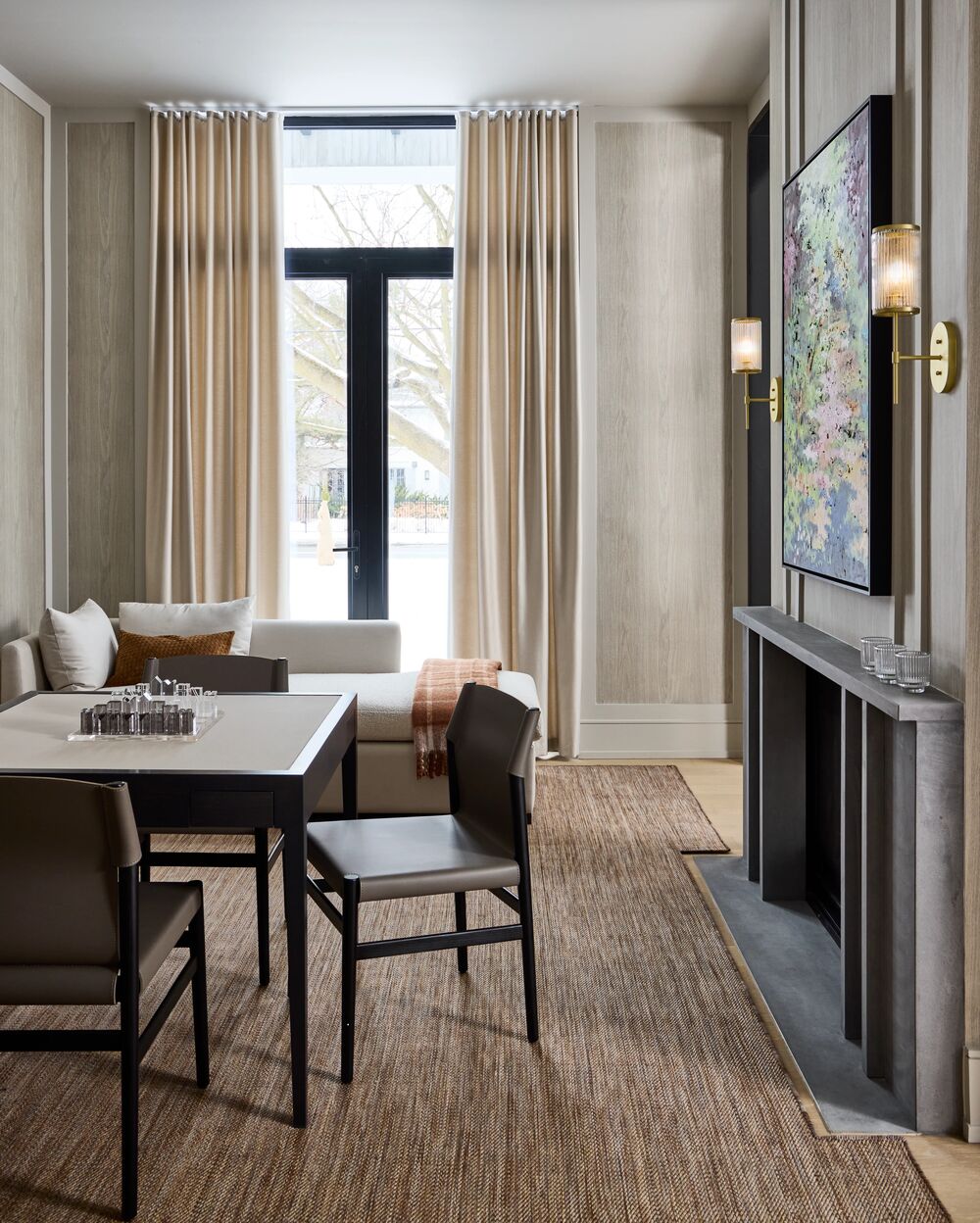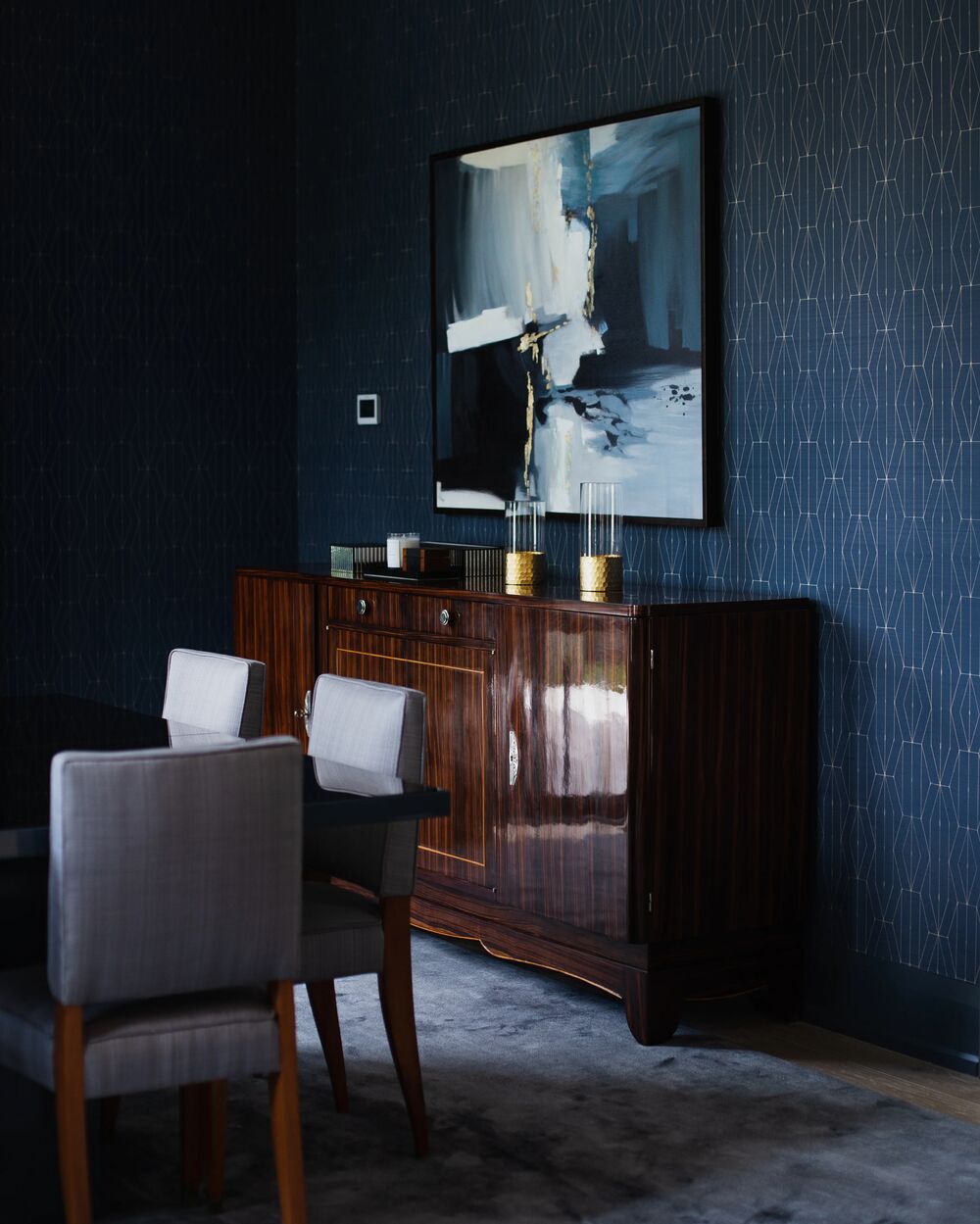
Trends may capture attention in the moment, but truly great interiors are built on principles that endure. Over decades of designing celebrated homes, interior designer Brian Gluckstein has developed a set of design rules that consistently deliver timeless, welcoming spaces. They aren’t about rigid formulas. Instead, they’re guiding ideas that bring balance, personality, and ease into every room. Here are five of his most trusted design rules to inspire your own home.
Rule 1: Balance Your Monochromatic Palette
A monochromatic scheme can be one of the most sophisticated approaches to decorating. But it requires careful handling. The key is striking the right balance between your main hue and its supporting accents. Brian often follows what he calls the 75/25 rule: let about 75 percent of the room be your dominant colour, and layer in roughly 25 percent contrast. Too much contrast and the effect is lost. Too little and the room risks feeling flat. Imagine a living room dressed mostly in creamy whites, anchored with a rug in the same shade, then grounded by a coffee table or lighting in a darker finish.
Rule 2: Be Bold in the Powder Room
If there’s any space in the home that invites adventure, it’s the powder room. Because this small room doesn’t need to accommodate tubs, showers, or extensive storage, it offers the freedom to be daring. Saturated paint colours, patterned wallpaper, or a statement chandelier can make this compact space feel dramatic and memorable. Since it’s mainly used by guests, the impact is all the more rewarding. Don’t play it safe here—embrace the chance to surprise.
Rule 3: Mix in Antiques for Soul
Every home benefits from a sense of history, and antiques are one of the most effective ways to achieve it. A vintage chair at a sleek modern desk. A patinaed mirror in a contemporary hallway. A centuries-old cabinet in a minimalist living room. These pieces tell stories—of who crafted them, where they’ve travelled, and how they’ve been loved over time. Blending the old with the new personalizes your home. It also prevents it from feeling like it was decorated all at once or straight from a showroom.

Rule 4: Design the Outdoors Like Indoors
Outdoor living has become an extension of the home, and the same design thinking applies. Start with comfortable seating arranged to encourage conversation. Then add layers just as you would inside: outdoor rugs, accent tables, and lighting. A focal point is essential, whether it’s a fireplace, firepit, or dramatic lanterns. When treated with the same care as your interior, a terrace or patio feels like a continuation of the home. It works for morning coffee just as well as for evening entertaining.
Rule 5: Embrace Relaxed Living
Even in the most refined interiors, a sense of ease is essential. The goal is to create spaces that invite you in rather than intimidate. That might mean leaning artwork casually against a wall instead of hanging it. It could be choosing natural fibre rugs to soften formal rooms. Or layering throws and pillows that encourage you to sit back and unwind. These details introduce a looseness that makes a room feel authentic and lived-in. A home designed with comfort in mind will always be one you love returning to.
These five design rules highlight what makes Brian Gluckstein’s interiors so enduring. They balance beauty with practicality, refinement with comfort, and history with modern life. Follow them in your own home and you’ll create spaces that feel not just stylish today, but timeless for years to come.
Photography by Stacey Brandford (1), Brittany Townsend (2)